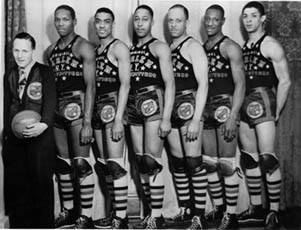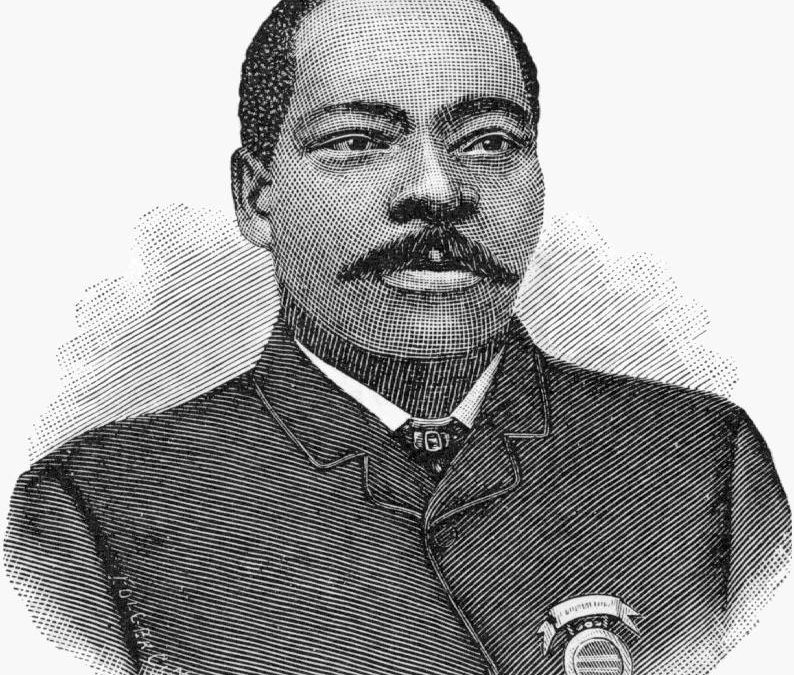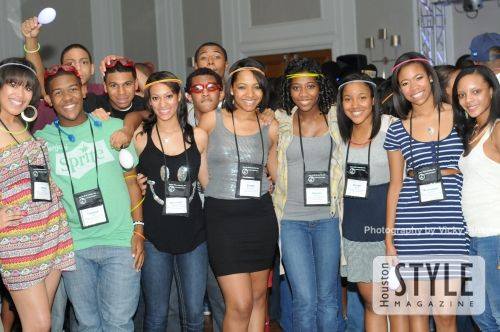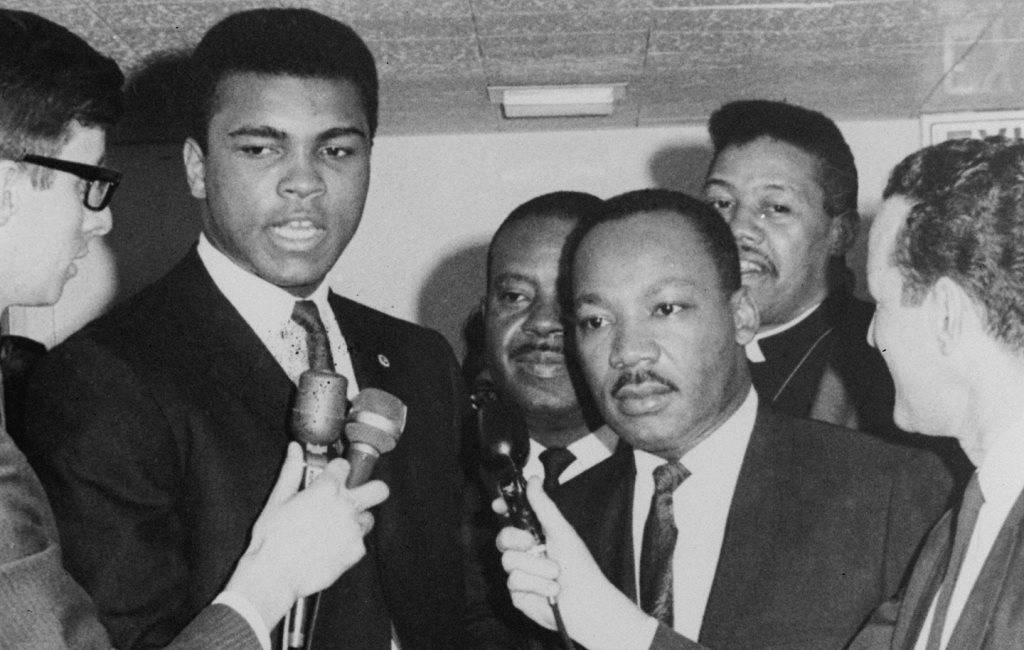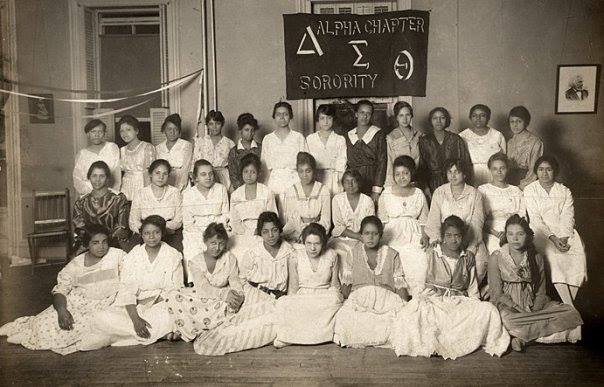GM – FBF – Leadership is self-made. People who have deliberately
decided to become problems solver lead better.
Remember – The ultimate measure of a man is not where he stands
in moments of comfort and convenience, but where he stands at times of challenge
and controversy. – MLKJR
Today in our History – Martin Luther King, Jr. was the
charismatic leader of the Civil Rights Movement in the United States. Chosen to
lead the Montgomery Bus Boycott at its genesis in 1955, the year-long
nonviolent struggle brought King under the scrutiny of a wary and divided
nation. However, his direction, spokesmanship, and the resultant victory of a
Supreme Court ruling against bus segregation, cast him in a brilliant light.
King then persevered in his quest to obtain civil rights for a
nation of African Americans. He formed the Southern Christian Leadership
Conference (SCLC) to coordinate nonviolent protests and delivered over 2,500
speeches addressing America’s racial injustices, with I Have a Dream being his
most memorable.
When King was assassinated in 1968, the nation shook with the
impact; violence broke out in over 100 cities. To many, Martin Luther King, Jr.
was a hero.
Dates: January 15, 1929 — April 4, 1968
Also known as: Michael Lewis King, Jr. (born as); Reverend
Martin Luther King
Tuesday’s Child
When Martin Luther King, Jr. opened his eyes for the first time Tuesday,
January 15, 1929, he beheld a world that would view him scornfully only because
he was black.
Born to Michael King Sr., a Baptist minister, and Alberta
Williams, a Spelman College graduate and former schoolteacher, King lived in a
nurturing environment with his parents and older sister, Willie Christine, in
the Victorian home of his maternal grandparents.
(A younger brother, Alfred Daniel, would be born 19 months
later.)
Alberta’s parents, Rev. A.D. Williams and wife Jennie, lived in
a prosperous section of Atlanta, Georgia known as “black Wall Street.” Reverend
Williams was pastor of the Ebenezer Baptist Church, a well-established church
within the community.
Martin — named Michael Lewis until he was five — thrived with
his siblings in a secure middle-class family and had a normal, happy
upbringing. Martin enjoyed playing football and baseball, being a paper boy,
and doing odd jobs. He wanted to be a fireman when he grew up.
A Good Name
Martin and his siblings received reading and piano lessons from their mother,
who worked diligently to teach them self-respect.
In his father, King had a bold role model. King Sr. was involved
in the local chapter of the NAACP (National Association for the Advancement of
Colored People), and had led a successful campaign for equal wages of white and
black teachers in Atlanta. The elder King was outspoken and fought prejudice
from the pulpit — advocating racial harmony as God’s will.
Martin was also inspired by his maternal grandfather, Rev. A. D.
Williams. Both his father and grandfather taught a “social gospel” — a belief
in personal salvation with the need to apply the teachings of Jesus to life’s
daily problems.
When Rev. A.D. Williams died of a heart attack in 1931,
son-in-law King Sr. became pastor of Ebenezer Baptist Church, where he served
for 44 years.
In 1934, King Sr. attended the World Baptist Alliance in Berlin.
When he returned to Atlanta, King Sr. changed his name and the
name of his son from Michael King to Martin Luther King, after the Protestant
reformist.
King Sr. was inspired by Martin Luther’s courage in confronting
institutionalized evil while challenging the formidable Catholic Church.
Attempted Suicide
Martin Luther King, Jr.’s grandmother Jennie, whom he affectionately called
“Mama,” was especially protective of her first grandson. Likewise, King
closely bonded with his grandmother, classifying her as “saintly.”
When Jennie died of a heart attack in May 1941, 12-year-old King
was supposed to be home babysitting 10-year-old A.D. Instead, he was away
watching a parade, disobeying his parents. Inconsolable and racked with guilt,
King jumped from a second-story window of his home, attempting suicide.
He was uninjured, but cried and could not sleep for days
afterward.
King would later talk about the affect his grandmother’s death
had on him. He never forgot his transgression and attributed his religious
development a result of the tragedy.
Church, School, and Thoreau
Skipping both 9th and 12th grades, King was only 15 when he entered Morehouse
College. During this time, King had a moral dilemma — though the son,
grandson, and great-grandson of clergymen, King was uncertain he would follow
in their footsteps. The insular nature of the black, southern, Baptist church
felt unchallenging to King.
Also, King questioned religion’s relevance in addressing the
real problems of his people, such as segregation and poverty. King began
rebelling against a life of service to God — playing pool and drinking beer
his first two years at Morehouse. King’s teachers labeled him an underachiever.
Aimlessly, King studied sociology and considered going into law.
He voraciously read and came upon the essay On Civil Disobedience by Henry
David Thoreau. King was fascinated by noncooperation with an unjust system.
It was Morehouse president Dr. Benjamin Mays, however, who
challenged King to align his ideals with his Christian faith to address social
dysfunction. With Mays’ guidance, King decided that social activism was his
inherent calling and that religion was the best means to that end.
To his father’s joy, Martin Luther King, Jr. was ordained a
minister in February 1948. That same year, King graduated from Morehouse with a
Bachelor of Arts degree in sociology at age 19.
Seminary: Finding A Way
In September 1948, King entered Crozer Theological Seminary in Pennsylvania.
Unlike at Morehouse, King excelled at the predominately-white seminary and was
extremely popular — especially with the ladies. King became involved with a
white cafeteria worker, but was told that an interracial romance would
devastate any career move. King halted the relationship, yet was heartbroken.1
Struggling for a way to help his people, King absorbed the works
of great theologians. He studied Reinhold Neibuhr’s neo-orthodoxy, a concept
which emphasizes human involvement in community and a moral duty to love
others. King studied Georg Wilhelm Hegel’s essentialism and Walter
Rauschenbusch’s social responsibility — which was more consistent with King’s
rationalization of social gospel.
However, King despaired that no philosophy was complete within
itself; thus, the question of how to reconcile a nation and a people in
conflict remained unanswered.
Discovering Gandhi
At Crozer, Martin Luther King, Jr. heard a lecture about India’s leader,
Mahatma Gandhi. As King delved into Gandhi’s teachings, he became captivated by
Gandhi’s concept of satyagraha (love-force) — or passive resistance. Gandhi’s
crusades countered the British’s hatred with peaceful love.
Gandhi, like Thoreau, also believed that men should proudly go
to jail when they disobeyed unjust laws. Gandhi, however, added that one should
never use violence because it only bred hate and more violence. This concept
won India its freedom.
The Christian doctrine of love, King concluded, operating
through the Gandhian method of nonviolence, could be the most powerful weapon
utilized by an oppressed people.
At this juncture, however, King had only an intellectual
appreciation of Gandhi’s method, not realizing that an opportunity to test the
method would soon materialize.
In 1951, King graduated at the top of his class — earning a
Bachelor of Divinity degree and the prestigious J. Lewis Crozer fellowship.
In September of 1951, King enrolled in doctoral studies at
Boston University’s School of Theology.
Coretta, the Good Wife
A most important event occurred outside of King’s classroom and church nucleus.
While still in Boston, King met Coretta Scott, a professional singer studying
voice at the New England Conservatory of Music. Her refinement, good mind, and
ability to communicate on his level enchanted King.
Though impressed by the sophisticated King, Coretta hesitated to
become involved with a minister. She was persuaded, however, when King said she
possessed all the qualities he desired in a wife.
After overcoming resistance from “Daddy” King, who
expected his son to choose a hometown bride, the couple married June 18, 1953.
King’s father performed the ceremony on the lawn of Coretta’s family home in
Marion, Alabama. After their wedding, the couple spent their honeymoon at a
funeral parlor owned by a friend of King (hotel honeymoon suites were not
available for blacks).
They then returned to Boston to complete their degrees, with
Coretta receiving a Bachelor of Music degree in June 1954.
King, an exceptional orator, was invited to preach a trial
sermon at the Dexter Avenue Baptist Church in Montgomery, Alabama. Their
current pastor, Vernon Johns, was retiring after years of challenging the
traditional status quo.
Dexter Avenue was an established church of educated,
middle-class blacks with a history of civil rights activism. King captivated
the Dexter congregation in January 1954 and in April he agreed to accept
pastorship, following completion of his doctoral thesis.
By the time King turned 25, he had received his PhD from Boston
University, welcomed daughter Yolanda, and delivered his first sermon as
Dexter’s 20th pastor.
Give and Take in Their Marriage
From the beginning, Coretta was committed to her husband’s work, accompanying
him around the world, stating, “What a blessing, to be a co-worker with a man
whose life would have so profound an impact on the world.”2
However, throughout the Kings’ marriage, there was constant
conflict about the role Coretta should play. She wanted to participate more
fully in the movement; while King, thinking of the dangers, wanted her to stay
home and raise their children.
The Kings had four children: Yolanda, MLK III, Dexter, and
Bernice. When King was home, he was a good dad; however, he wasn’t home much.
In 1989, King’s close friend and mentor, Reverend Ralph Abernathy wrote in his
book that he and King spent 25 to 27 days per month away from home. And though
it was no excuse for unfaithfulness, it gave ample opportunity. Abernathy wrote
that King had “a particularly difficult time with temptation.”3
The couple would remain married for nearly 15 years, until
King’s death.
The Montgomery Bus Boycott
When 25-year-old King arrived in Montgomery in 1954 to pastor Dexter Avenue
Baptist Church, he didn’t plan on leading a civil rights movement — but
destiny beckoned.4
Rosa Parks, secretary of the local chapter of the NAACP, had
been arrested for her refusal to relinquish her bus seat to a white man.
Parks’ arrest on December 1, 1955, presented the perfect
opportunity to make a strong case for desegregation of the transit system. E.D.
Nixon, former head of the local NAACP chapter, and Rev. Ralph Abernathy
contacted King and other clergymen to plan a citywide bus boycott. The
organizers of the boycott — the NAACP and the Women’s Political Council (WPC)
— met in the basement of King’s church, which he had offered.
The group drafted demands for the bus company. To secure the
demands, no African American would ride the buses on Monday, December 5th.
Leaflets announcing the planned protest were distributed, receiving unexpected
publicity in newspapers and on radio.
Answering the Call
On December 5, 1955, nearly 20,000 black citizens refused bus rides. And
because blacks comprised 90% of the transit system’s passengers, most buses
were empty. Since the one-day boycott was successful, E.D. Nixon held a second
meeting to discuss extending the boycott.
However, the ministers wanted to limit the boycott so as not to
anger the white hierarchy in Montgomery. Frustrated, Nixon threatened to expose
the ministers as cowards. Whether through strength of character or divine will,
King stood to say he was no coward.5
By meeting’s end, the Montgomery Improvement Association (MIA)
was formed and King was elected president; he had agreed to lead the boycott as
spokesperson. That evening, King addressed hundreds at Holt Street Baptist
Church, stating there was no alternative except to protest.
By the time the bus boycott ended 381 days later, Montgomery’s
transit system and the city’s businesses were nearly bankrupt. On December 20,
1956, the United States Supreme Court ruled that the laws enforcing segregation
on public transit were unconstitutional.
The boycott changed King’s life and the city of Montgomery. The
boycott had illuminated the power of nonviolence to King, more than reading any
book had, and he committed to it as a way of life.
Black Church Power
Buoyed by the success of the Montgomery Bus Boycott, the movement’s leaders met
in January 1957 in Atlanta and formed the Southern Christian Leadership
Conference (SCLC). The group’s aim was to utilize the people-power of the black
church to coordinate nonviolent protests. King was elected president and
remained at the helm until his death.
Several major life events transpired for King in late 1957 and
early 1958 — the birth of a son and the publication of his first book, Stride
Toward Freedom.
While signing books in Harlem, King was stabbed by a mentally
ill black woman. King survived this first assassination attempt and as part of
recovery, took a trip to India’s Gandhi Peace Foundation in February 1959 to
refine his protest strategies.
The Battle for Birmingham
In April 1963, King and the SCLC joined Rev. Fred Shuttlesworth of the Alabama
Christian Movement for Human Rights (ACMHR) in a nonviolent campaign to end
segregation and to force businesses to hire blacks in Birmingham, Alabama.
However, powerful firehoses and vicious attack-dogs were
unleashed on the peaceful protestors by “Bull” Connor’s local police. King was
thrown into solitary, where he penned Letter from a Birmingham Jail, an
affirmation of his peaceful philosophy, on April 16, 1963.
Broadcast on national news, images of the brutality wrenched an
unprecedented cry from an outraged nation. Many began to send money in support
of the protesters. White sympathizers joined the demonstration.
In a few days, the protest became so explosive that Birmingham
was willing to negotiate. By the summer of 1963, thousands of public facilities
were integrated across the country and companies began to hire blacks for the
first time.
More importantly, a political climate was created in which
passage of broad civil rights legislation seemed plausible. On June 11, 1963,
President John F. Kennedy proved his commitment to the passage of civil rights
legislation by drafting the Civil Rights Act of 1964, which was signed into law
by President Lyndon Johnson after Kennedy’s assassination.
The March on Washington
The events of 1963 culminated in the famous March on Washington in D.C. On
August 28, 1963, nearly 250,000 Americans arrived in sweltering heat. They had
come to hear the speeches of various civil rights activists, but most had come
to hear Martin Luther King, Jr.
Planning the rally had been a group effort, involving King,
James Farmer of CORE, A. Philip Randolph of the Negro American Labor Council,
Roy Wilkins of the NAACP, John Lewis of SNCC, and Dorothy Height of the
National Council of Negro Women. Bayard Rustin, King’s long-time political
advisor, was the coordinator.
The Kennedy Administration, fearing violence would ensue, edited
the content of John Lewis’ speech and invited white organizations to take part.
This involvement caused some extremist blacks to consider the event a
misrepresentation. Malcolm X labeled it the “farce in Washington.”6
The crowd far exceeded the expectations of the event’s
organizers. Speaker after speaker addressed the progress made or lack thereof
in national civil rights. The heat grew oppressive — but then King stood up.
Whether by discomfort or distraction, the start of King’s
oration was atypically lackluster. It is said, however, that King suddenly
stopped reading from penned manuscript, being tapped on the shoulder by renewed
inspiration. Or was it the voice of famed gospel singer Mahalia Jackson
shouting to him “tell ’em about the dream, Martin!”7
Laying jotted notes aside, King spoke from the heart of a
father, declaring that he had not lost hope, because he had a dream – “that one
day my four little children will not be judged by the color of their skin, but
by the content of their character.” The speech King never intended to give was
the greatest speech of his life.
The fact that King’s I Have a Dream speech was comprised of
portions of his sermons and speeches does not denigrate its essence. At a time
when a voice was needed, I Have a Dream so eloquently embodied the soul, the
heart, and the hope of a people.
Man of the Year
Martin Luther King, Jr., now known worldwide, was designated Time magazine’s
1963 “Man of the Year.” In 1964, King won the most coveted Nobel Peace Prize,
donating its $54,123 proceeds to advance civil rights.
But not everyone was thrilled by King’s successes. Since the
Montgomery Bus Boycott, King had been the unknowing subject of the covert
scrutiny of FBI director J. Edgar Hoover.
Hoover was personally malicious toward King, calling him “most
dangerous.” Hoping to prove King was under communistic influence, Hoover filed
a request with Attorney General Robert Kennedy to put King under constant
surveillance.
In September 1963, Robert Kennedy gave Hoover consent to break
into King and his associates’ homes and offices to install phone taps and
recorders. King’s hotel-stays were subjected to FBI monitoring, which allegedly
produced evidence of sexual activity but none of communist activity.
The Poverty Problem
The summer of 1964 saw King’s nonviolent concept challenged in the north, with
riot outbreaks in black ghettos in several cities. The riots resulted in
massive property damage and loss of life.
The riots’ origins were clear to King — segregation and
poverty. Although Civil Rights had helped blacks, most still lived in extreme
poverty. Without jobs it was impossible to afford decent housing, healthcare,
or even food. Their misery birthed anger, addiction, and subsequent crime.
The riots disturbed King deeply and his focus shifted to the
poverty dilemma, but he was unable to garner support. Nevertheless, King
organized a campaign against poverty in 1966 and moved his family into
Chicago’s black ghetto.
King found, however, that the successful strategies used in the
South did not work in Chicago. Also, King’s impact was diminished by the
increasingly vitriolic rant of the black urban demographic of the period.
Blacks began turning away from the peaceful course of King to the radical
concepts of Malcolm X.
From 1965 to 1967, King met with constant criticism over his
passive nonviolent message. But King refused to discard his firm convictions of
racial harmony through nonviolence. King placidly addressed the harmful
philosophy of the Black Power movement in his last book, Where Do We Go from
Here: Chaos or Community?
To Remain Relevant
Although only 38 years old, Martin Luther King, Jr. had wearied of years of
demonstrations, confrontations, marches, going to jail, and the ever-present
threat of death. He was disheartened by the criticism and the uprising of
militant factions.
Even as his popularity waned, King sought to clarify the link
between poverty and discrimination and to address America’s increased
involvement in Vietnam. In a public address, Beyond Vietnam on April 4, 1967,
King stated that the Vietnam War was politically unjustifiable and discriminatory
towards the poor. This placed King under the watchful eye of the FBI even more.
King’s last campaign seemed a precursor to today’s “occupy”
movement. Organizing with other civil rights groups, King’s Poor People’s
Campaign would bring impoverished people of various ethnicities to live in tent
camps on the National Mall. The event would take place in April.
Martin Luther King’s Last Days
In the spring of 1968, drawn by a labor strike of black sanitation workers,
King went to Memphis, Tennessee. King joined the march for job safety, higher
wages, union recognition, and benefits. But after the march began, a riot broke
out — 60 people were injured, one killed. This ended the march and a saddened
King went home.
Upon reflection, King felt he was surrendering to violence and
returned to Memphis. On April 3, 1968, King gave what proved his last speech.
Towards the end, he stated that he wanted a long life but had been warned he
would be killed in Memphis. King said that death did not matter now because he’d
“been to the mountaintop” and had seen “the promised land.”
On the afternoon of April 4, 1968 — a year to the date of
delivering his Beyond Vietnam argument, King stepped onto the balcony of the
Lorraine Motel in Memphis. A rifle blast rang out from a boarding house across
the way. The bullet tore into King’s face, slamming him against a wall and onto
the ground. King died at St. Joseph’s Hospital less than an hour later.
Free at Last
King’s death brought tremendous grief to a violence-weary nation and race riots
exploded all over the country.
King’s body was brought home to Atlanta so that he could
lay-in-state at Ebenezer Baptist Church, where he had co-pastored with his
father for many years.
On Tuesday, April 9, 1968, King’s funeral was attended by dignitaries
and commoners alike. Great words were spoken to eulogize the slain leader.
However, the most apropos eulogy was delivered by King himself, when a tape
recording of his last sermon at Ebenezer was played:
“If any of you are around when I meet my day, I don’t want
a long funeral… I’d like someone to mention that day that Martin Luther King,
Jr. tried to give his life serving others… And I want you to say that I tried
to love and serve humanity.”
King’s body is interred at the King Center in Atlanta, Georgia.
Martin Luther King’s Legacy
Without question, Martin Luther King, Jr. achieved much in the short span of
eleven years. With his accumulated travel of over six million miles, King could
have gone to the moon and back four-and-a-half times. Instead, he traveled the
world giving over 2,500 speeches, writing five books, participating in eight
major nonviolent recourses to effect social change, and was arrested over 20
times.
In November 1983, President
Ronald Reagan honored Martin Luther King, Jr. by creating a national holiday to
celebrate the man who did so much for the United States. (King is the only
African American and non-president to have a national holiday.) Make it a
champion day!

